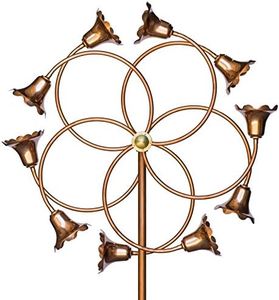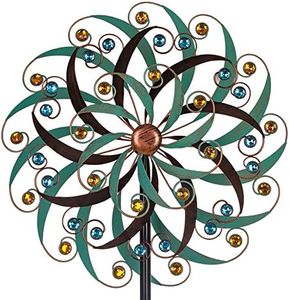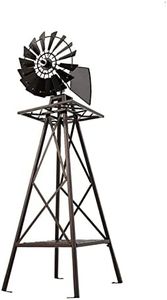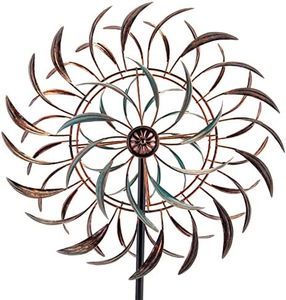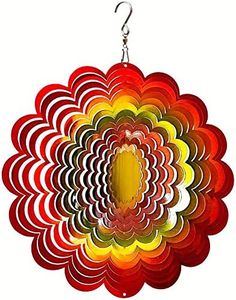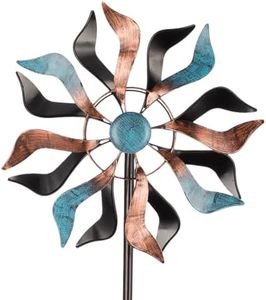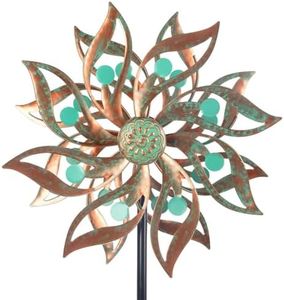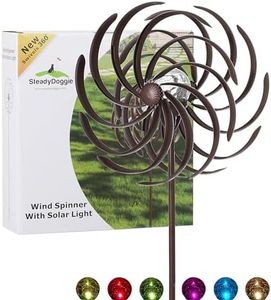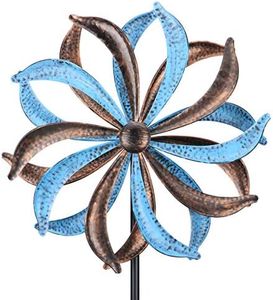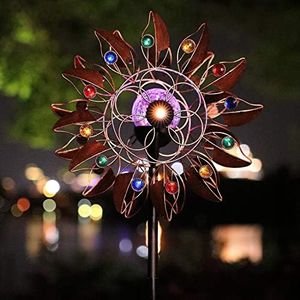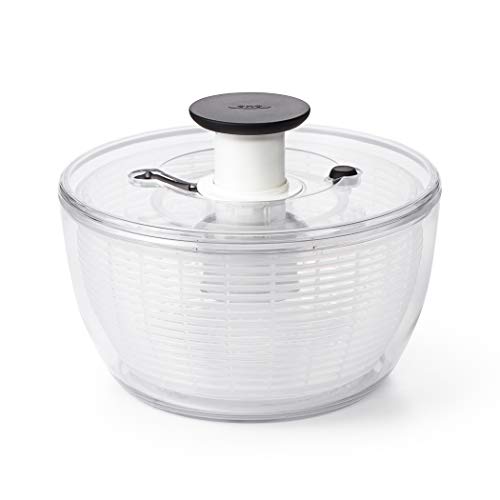We Use CookiesWe use cookies to enhance the security, performance,
functionality and for analytical and promotional activities. By continuing to browse this site you
are agreeing to our privacy policy
10 Best Wind Spinners
From leading brands and best sellers available on the web.By clicking on a link to a third party's website, log data is shared with that third party.
Buying Guide for the Best Wind Spinners
Shopping for wind spinners is a fun way to add dynamic beauty and visual interest to your outdoor space. Whether you want to bring color to your garden, attract the eye to a patio, or simply enjoy mesmerizing movement in the breeze, choosing the right wind spinner involves understanding a few key factors. It's important to consider not only how it looks but also how it will perform and endure in your environment. Take a little time to think about where you want to place it and what kind of effect you'd like—then explore the following essential specifications to guide your decision.MaterialMaterial refers to what the wind spinner is made from, which impacts its durability, weight, appearance, and ability to withstand different weather conditions. Common materials include metal, plastic, and sometimes glass or wood. Metal spinners are sturdy and often weather-resistant, especially if coated to prevent rust, while plastic options may be lighter and more colorful but less durable in strong winds. If you want a spinner that lasts through all seasons, prioritize rust-resistant metals, but lighter or more decorative plastic and glass are suitable for more protected and ornamental spots. Consider where the spinner will be placed and pick a material that suits the exposure and your desired style.
SizeSize describes both the overall diameter or height of the spinner and how much space it will occupy visually. Small wind spinners may be just a few inches across and fit nicely in container gardens or smaller balconies. Large spinners, often over a foot wide or tall, can become striking focal points in yards or large gardens. When thinking about size, match the spinner's scale to its surroundings—choose smaller models for intimate spaces and dramatic, large ones for open areas where they can truly stand out.
Ease of Assembly and InstallationThis spec covers how simple it is to put the wind spinner together and secure it in its chosen spot. Some spinners are one piece and ready to use, while others require assembly or tools. Sturdy stakes or mounts make a big difference for installation, especially in windy areas. If you prefer a fuss-free setup, choose a spinner with straightforward assembly and clear instructions, and look for one with a reliable mounting method, keeping in mind your ground or hanging options.
Movement SensitivityMovement sensitivity refers to how easily the spinner catches the wind and begins to rotate or twirl. Spinners designed to move with a light breeze can be entertaining even on calm days, while heavier or more balanced ones may only activate in stronger gusts, giving a more dramatic show. If you live in an area with gentle winds, opt for highly sensitive, lightweight designs. In windy places, sturdier spinners are a better match so they don’t spin too quickly or get damaged.
Visual Effect and DesignThe visual effect combines both the color and the kind of movement or patterns a wind spinner creates. Some feature vibrant colors for a playful look, while others might use metallic finishes for sparkle or more natural tones. Shapes range from classic spirals to animal or abstract forms, each creating a different visual impact as they spin. Think about whether you want your spinner to blend in with your garden’s theme or stand out as a centerpiece, and choose a design and color scheme that matches your taste and desired garden mood.
Weather ResistanceWeather resistance determines how well a wind spinner can endure sun, rain, wind, and sometimes even snow without fading, rusting, or breaking. Features like UV-resistant paints, waterproof materials, or rust-proof coatings can help spinners stay attractive and functional for years. If your spinner will be outside year-round, prioritize weather-resistant features. For decorative indoor or sheltered spaces, this spec is less critical.
